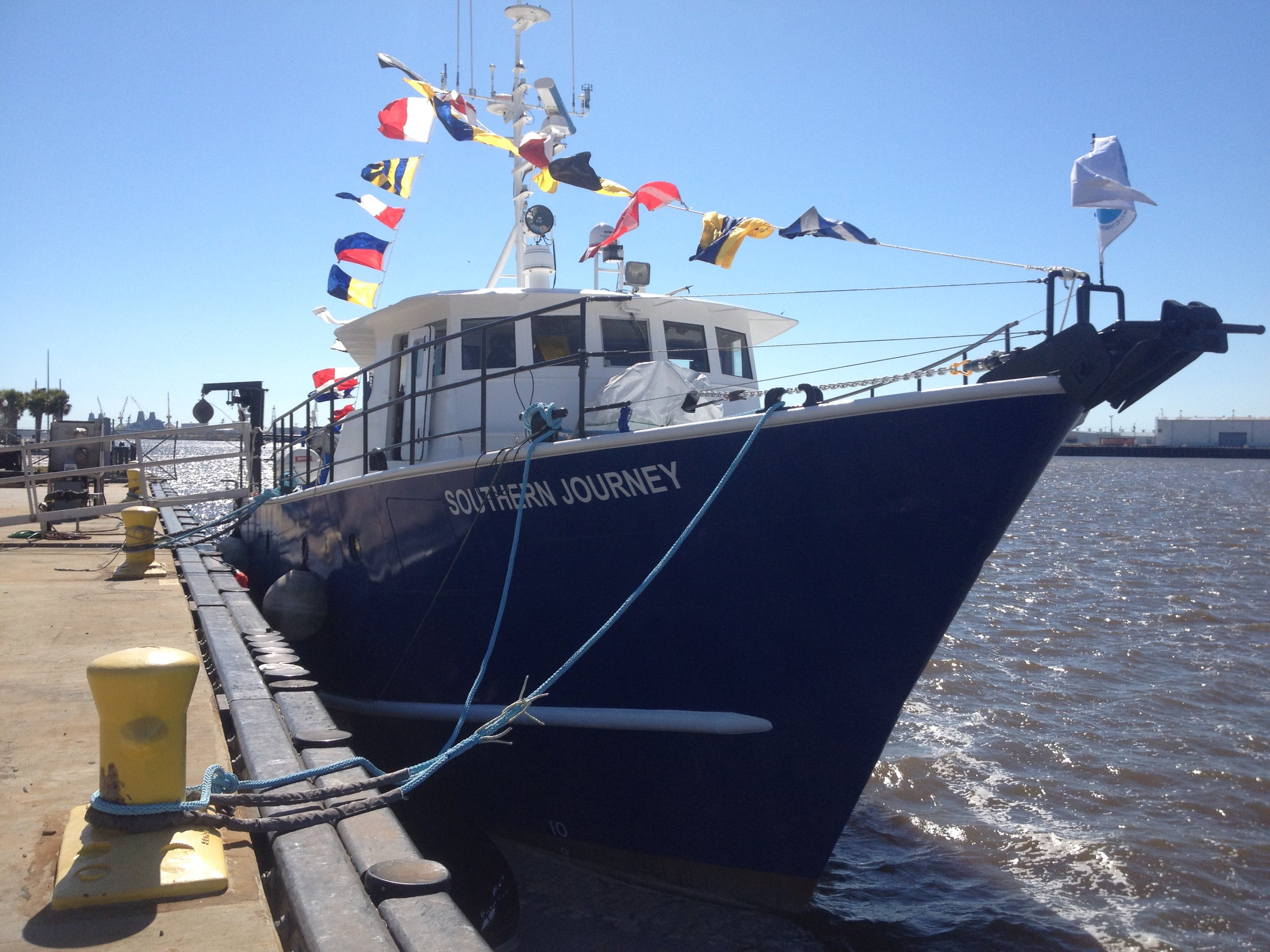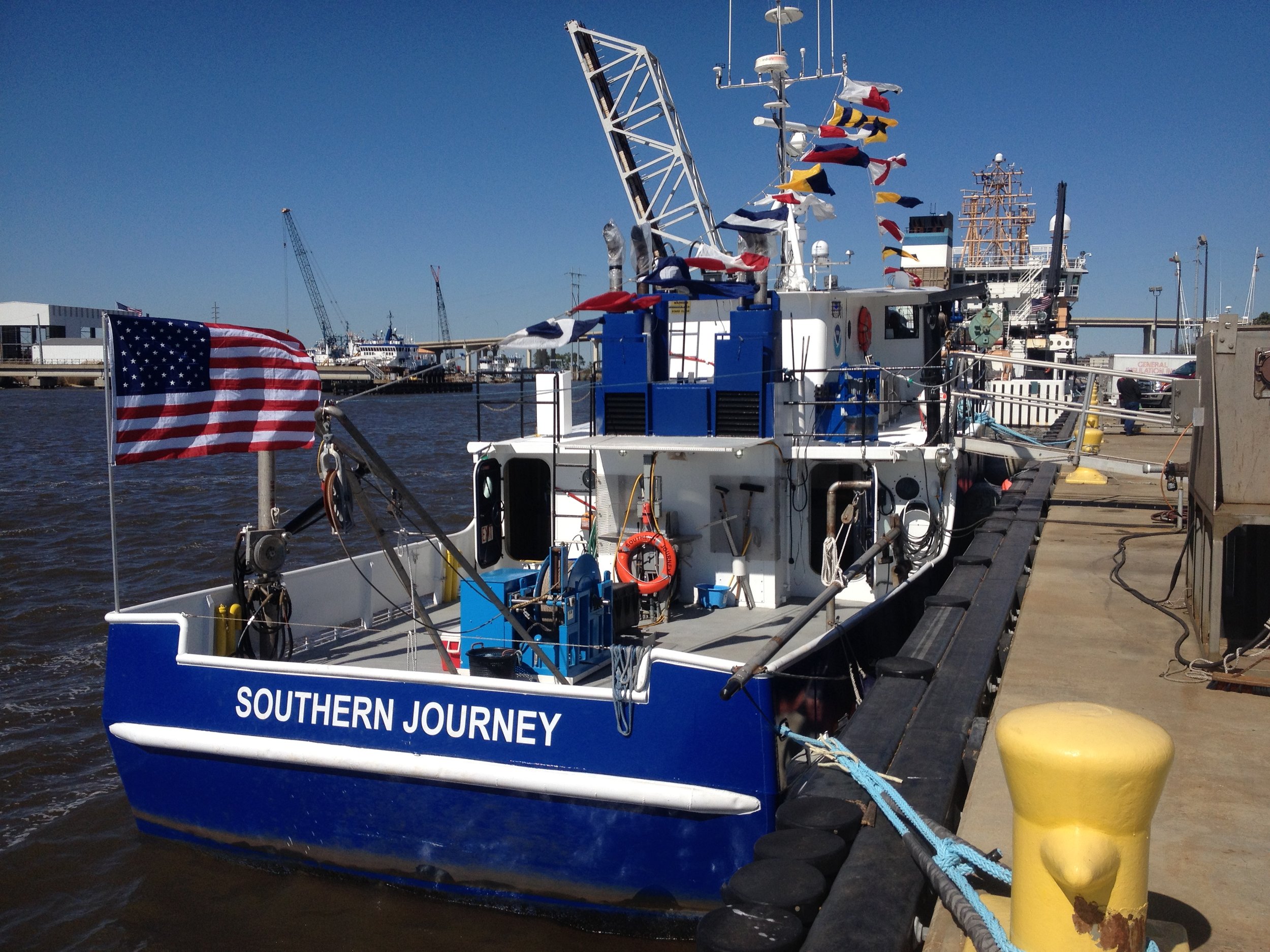In late 2014, two Riverside employees: David Saksa and Keith Bates captained a boat from Northern Michigan down the Mississippi to the Southeast Fisheries Science Center of the National Marine Fisheries Service (NMFS) in an impressive feat of technical skill and ingenuity. Their ability to modify the boat during their journey to fit under bridges and eventually become a scientific research vessel saved the government more than 7 million dollars.
As a part of their work with the Southeast Fisheries Science Center (SEFSC), Riverside provides captains and crew for small boats (20-80ft), as well as providing scientific support to federal fisheries management and federally-listed protected species conservation for the geographic area encompassed by the coastal states from North Carolina through Texas, as well as Puerto Rico and the U.S. Virgin Islands in the U.S. Caribbean.
The SEFSC was experiencing challenges in completing mission critical surveys, including programs that Riverside offered support on, such as gear development and research. This program involves design, construction, and maintenance of survey sampling gear used on fisheries-independent resource surveys such as trawls, longlines, bandit reels, etc. The program also conducts gear modification research to reduce bycatch of fish, sea turtles, and other protected species in a variety of Southeast Region fisheries. Increasing demand and competition within and across NOAA line offices for research time aboard NOAA Fisheries research vessels put pressure to find a vessel that could replace the SRV Gandy, a buoy tender with limited space and function for fisheries work.
In the summer of 2014, the SEFSC staff located a potential replacement vessel available for transfer to the SEFSC by the U.S. Geological survey in northern Michigan. SEFSC staff traveled to Michigan to inspect the vessel with assistance from David Saksa. Mr. Saksa’s estimation of the condition of the vessel based on his expertise with the operation and maintenance of marine vessels and systems was very important to the SEFSC’s decision to acquire the vessel.
In December 2014, David Saksa and Keith Bates helped coordinate and execute a challenging inland journey serving as captain and crew along with other SEFSC staff during a 2-week transit of the vessel from Michigan to Mississippi. They worked skillfully under pressure to modify the vessel in route to reduce height for safe passage under bridges. Upon arriving in Pascagoula, David and Keith immediately went to work to thoroughly clean and refurbish the vessel. During the spring and summer of 2015 they completely remodeled and upgraded the vessel’s bridge, rewiring and installing new navigation and sounding electronics. Vessel captain (Saksa) and first mate (Bates) diligently performed numerous tasks to prepare the vessel for a planned September 2015 research cruise including oversight of the installation of deck steering, throttle controls, and high-efficiency heating/cooling units in labs and staterooms. The refurbished and newly named R/V Southern Journey conducted its maiden NOAA Fisheries survey in September 2015 and was formally christened in February 2016.
Since the maiden voyage, additional modifications to the vessel have included outriggers, a second deck winch platform and hydraulic winch systems. Contributing to this work was Riverside employee Warren Brown, who in addition to vessel crew support, provided welding and pipefitting expertise.
The significance of the efforts expended by David and Keith toward the creation of a highly effective research vessel for the SEFSC cannot be overstated. Their expertise with the repair and maintenance of marine vessel systems coupled with “hands-on” hard work and a mission-oriented attitude has resulted in a valuable asset for the SEFSC. The acquisition of the R/V Southern Journey promotes the continuity of long-term fisheries data time series, and enhances NOAA’s ability to conduct quality and timely stock assessments for commercially important species. The vessel will provide access to sensitive areas which are inaccessible by larger ships, offering a lower-cost option and offsetting lost sea days on NOAA ships due to repairs and the greater need to share vessels as ships are retired. Additionally, the repurposing of a government asset has resulted in a major cost savings for NOAA. The cost for a new scientific research vehicle (SRV) was estimated at $8,000,000. Acquisition, transport, and re-fitting of the R/V Southern Journey to meet NOAA small boat safety and NMFS mission requirements cost only $344,000, resulting in a $7,600,000 cost savings to the government.








